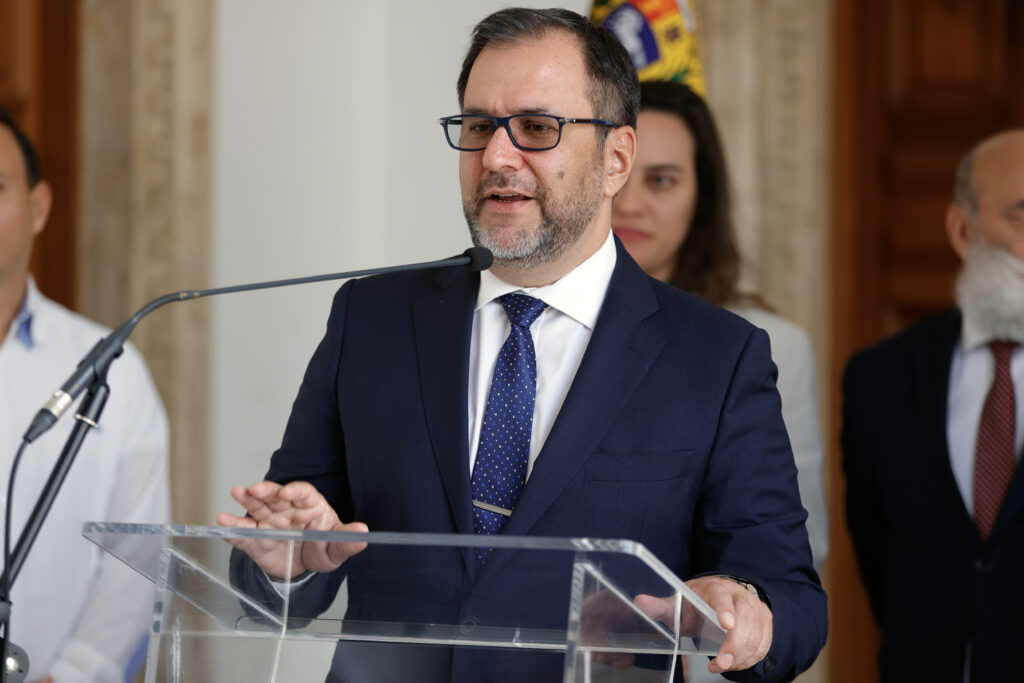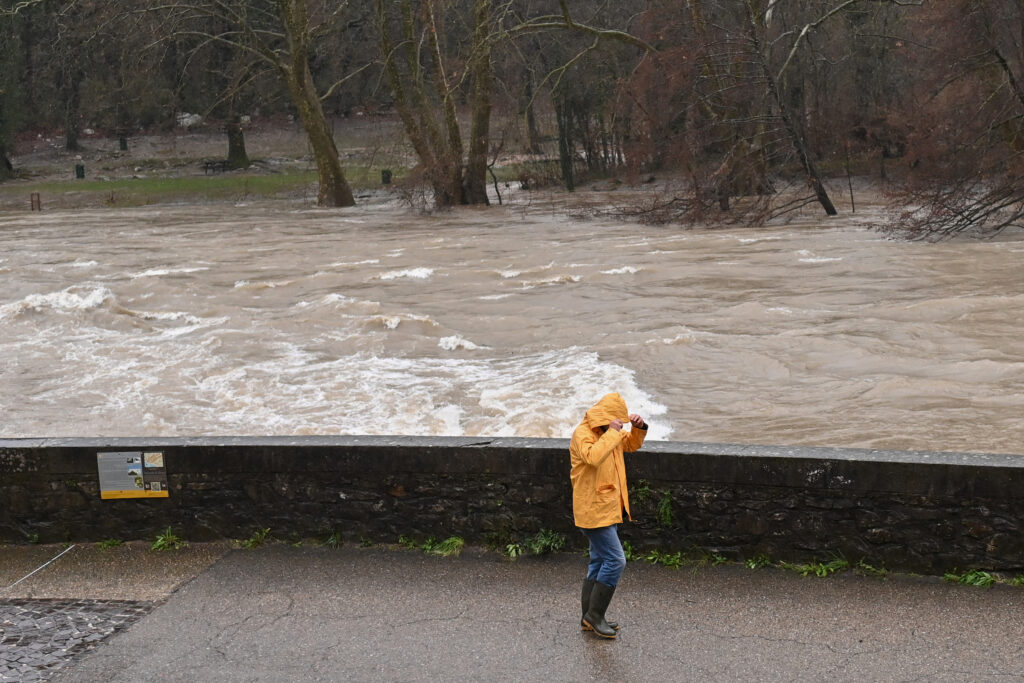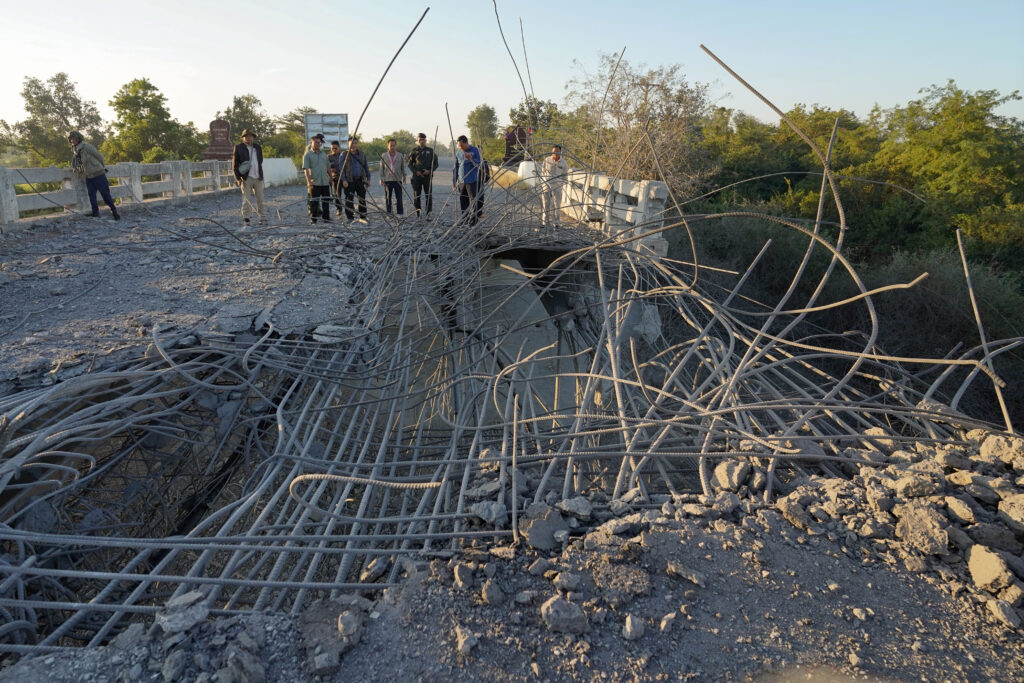La mobilisation des agriculteurs, opposés à la gestion gouvernementale de la dermatose nodulaire contagieuse (DNC) et au traité Mercosur, a baissé d’intensité ces derniers jours, mais des barrages et manifestations continuent à l’approche de Noël, notamment dans le Sud-Ouest.L’abattage lundi de quatre vaches à Saint-Marsal, dans les Pyrénées-Orientales, après la détection d’un cas de DNC vendredi, comme l’a confirmé à l’AFP la préfecture de ce département, a rappelé que l’épizootie reste d’actualité à l’avant-veille du réveillon, en dépit de la campagne de vaccination des bovins qui bat son plein dans le Sud-Ouest.La vache touchée appartenait à un élevage déjà touché par la dermatose au sein d’un groupe distinct de bovins, a précisé la préfecture.Depuis l’apparition de la DNC sur le territoire français, en Savoie cet été, l’Etat tente de contenir la propagation du virus en se fondant sur “trois piliers”: l’abattage systématique dès la détection d’un cas, la vaccination et la restriction de mouvements.- “Pas lâcher” -Dans la nuit de dimanche à lundi, un nouveau barrage a été levé, à Tarascon-sur-Ariège sur l’axe stratégique de la RN20 entre la France et l’Andorre, après dix jours de mobilisation, tandis que dans les Pyrénées-Atlantiques, seule la fin de l’abattage total pourrait faire quitter aux agriculteurs leur campement installé sur l’A64 à hauteur d’Urt, à 15 kilomètres de Bayonne, également depuis dix jours.”On ne va pas lâcher parce qu’il y a les fêtes de fin d’année. S’il faut partir une ou deux heures à la maison pour voir la famille, on le fera. Mais on reviendra toujours”, assure Xan Michelema, 20 ans.A l’autre extrémité de l’A64, à Carbonne, près de Toulouse, une petite foule d’agriculteurs se presse toujours sur le barrage décoré de sapins aux branches desquelles pendent des cartouches vides de gaz lacrymogène, tirées selon les agriculteurs autour de la ferme ariégeoise d’où la colère agricole est partie.- Messe de Noël -“Le soutien est indéfectible, il grossit tous les jours. Les gens veulent venir faire la messe de Nöel”, prévue le 24 au soir sous le pont de la sortie 27 de l’autoroute, a déclaré à l’AFP Bertrand Loup, éleveur et vice-président de la chambre d’agriculture de Haute-Garonne.Selon le ministère de l’Intérieur, 23 actions mobilisant 720 personnes ont été comptabilisées dimanche, essentiellement dans le Sud-Ouest, contre 50 actions samedi, 93 vendredi et 110 jeudi.Malgré cette décrue, la circulation est encore entravée sur l’A63 près de Bordeaux, sur l’A64 entre Toulouse et Bayonne, ou encore sur l’A75 Clermont-Béziers en Lozère et dans l’Aveyron, selon des représentants syndicaux joints par l’AFP.A Cestas (Gironde), une trentaine d’agriculteurs, certains avec leurs familles, poursuivaient le blocage sous l’échangeur de l’A63, où ils ont installé un sapin et une crèche, a constaté un journaliste de l’AFPTV.José Pérez, figure des mouvements de 2024 dans le Lot-et-Garonne voisin, salue la ténacité des manifestants. “Depuis deux ans, on se bat pour avoir des réponses pour que l’agriculture française soit prospère et pour que nous, agriculteurs, puissions vivre dignement de notre métier. Tout le monde s’en fout dans ce pays”, estime-t-il.Malgré les appels du gouvernement à une “trêve” à l’approche des fêtes, de nouvelles actions fleurissent encore.A Reims, une trentaine d’agriculteurs et une vingtaine de tracteurs étaient mobilisés lundi matin sur un barrage filtrant, distribuant du lait aux automobilistes.- Cellule scientifique -Lundi, une cellule de dialogue entre scientifiques et représentants agricoles d’Occitanie a tenu à Toulouse une deuxième réunion d’échanges autour d’une évolution du protocole de gestion de la crise de DNC.”Ça va à deux à l’heure”, a fustigé Bertrand Loup, indiquant que cette cellule ne pourrait permettre de modifier le protocole qu’au plus tôt en janvier. “Des cas (de DNC, ndlr), il peut y en avoir tous les jours et on se donne du temps dans l’urgence, c’est hallucinant.”Une rumeur d’un cas en Haute-Garonne a parcouru les conversations entre éleveurs, sans que les services de l’Etat ne confirment.Les bovins situés dans une zone couvrant dix départements du Sud-Ouest (Ariège, Aude, Gers, Haute-Garonne, Hautes-Pyrénées, Hérault, Landes, Pyrénées-Atlantiques, Pyrénées-Orientales et Tarn) doivent être vaccinés d’ici à mi-janvier.Mardi, le leader de la contestation au sud de Toulouse, Jérôme Bayle, doit être reçu en fin d’après-midi par le préfet. S’il demande de retirer le barrage sur l’A64, “on ira manifester à Toulouse et le mouvement s’élargira”, promet-il.bdu-tb-jed-ldf-mdz/vgr/de









